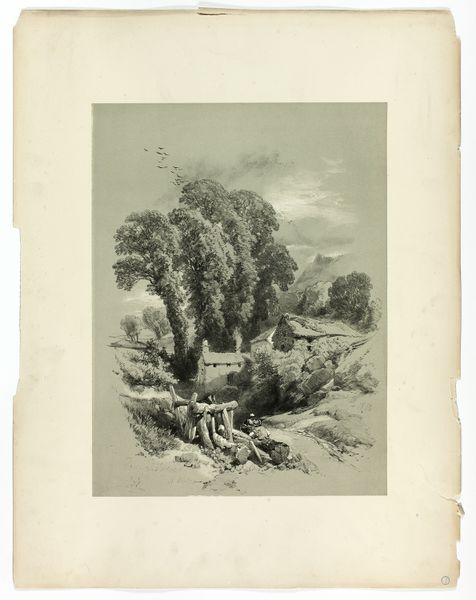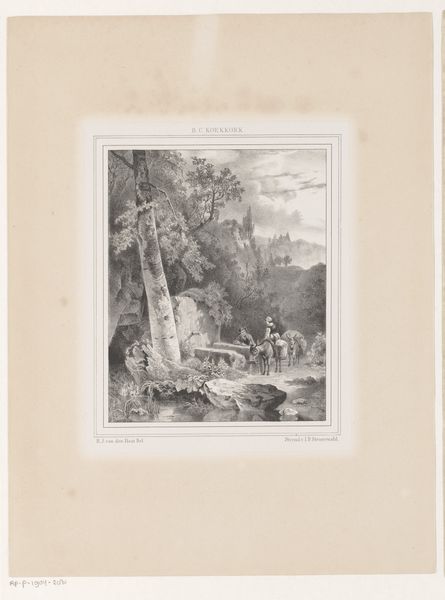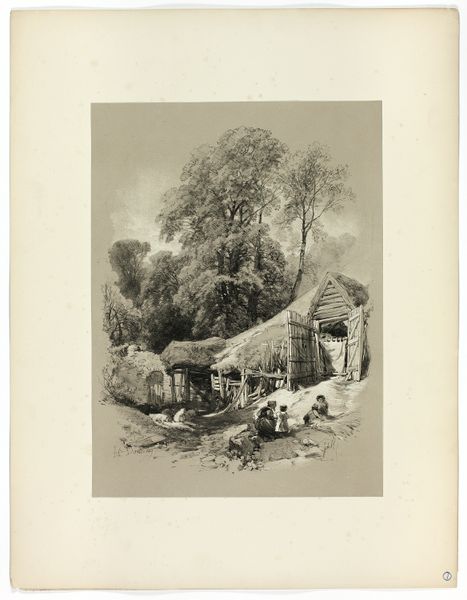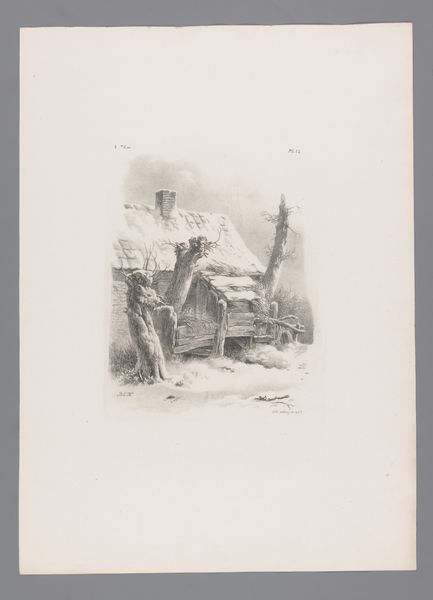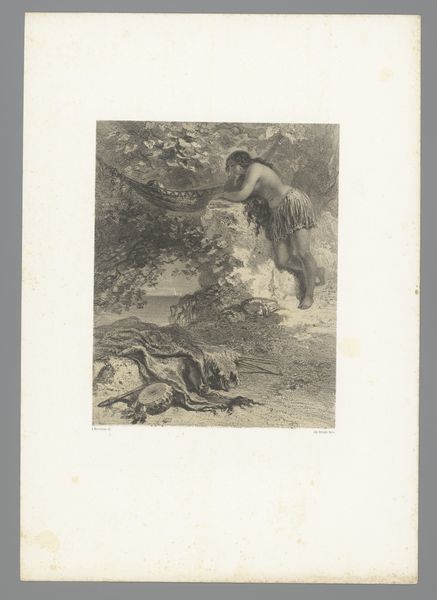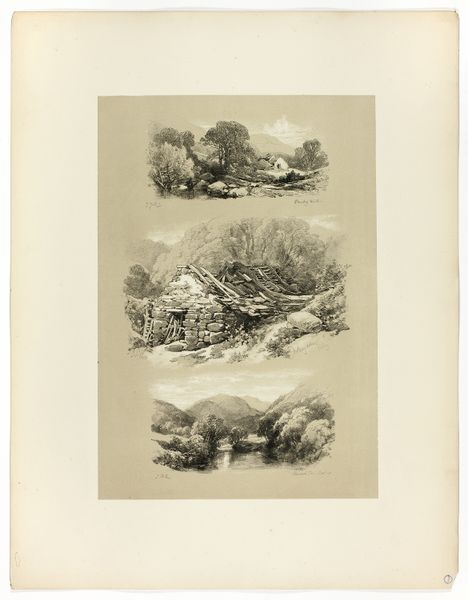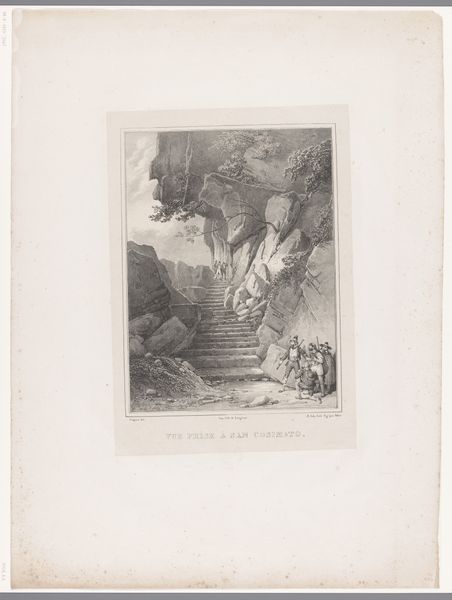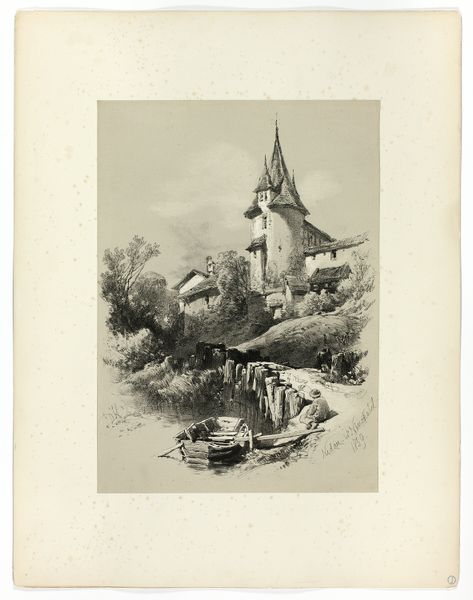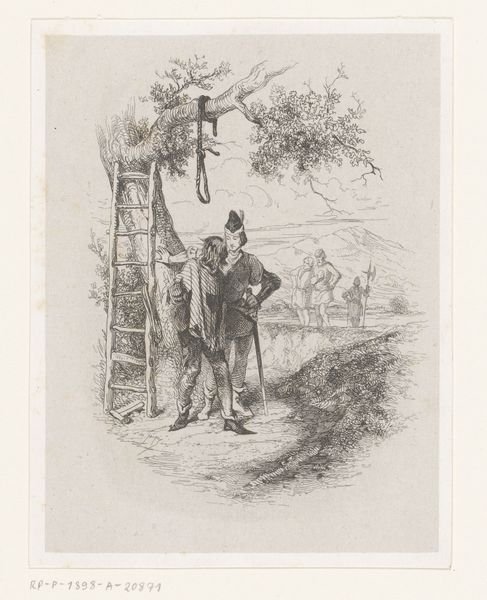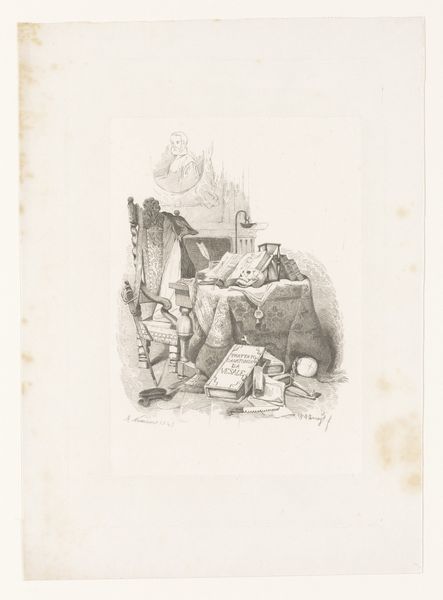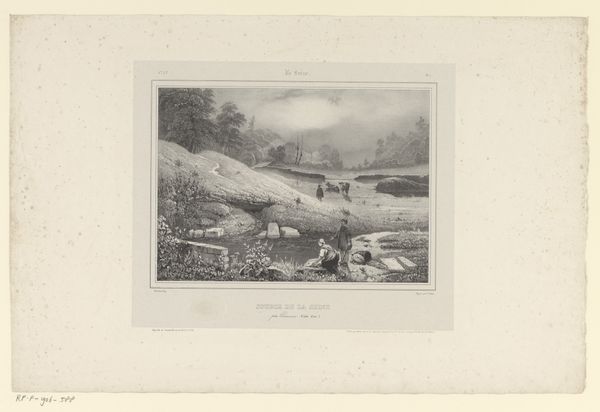
Dimensions: 383 × 273 mm (image, primary support); 540 × 434 mm (secondary support)
Copyright: Public Domain
Curator: Let's take a look at James Duffield Harding's "Brunnen, from Picturesque Selections," created around 1860. It’s a striking example of a landscape print, using a combination of lithography, etching, and aquatint. What are your immediate thoughts? Editor: The textures pull me in. The building’s wooden slats contrast nicely with the rough, rocky terrain and then the almost soft focus in the wooded area behind it. There’s a stark, documentary-like feel even within this picturesque setting. Curator: Harding's work is deeply rooted in the techniques. Aquatint would have allowed for those subtle tonal gradations that you see, giving the landscape depth. Think of the labor involved, not just the artist's, but also the printmakers translating his vision. Editor: Precisely! And thinking about the role of picturesque scenes, this evokes so many themes of how nature is perceived and consumed by an expanding middle class during this time. Observe that there is a person looking directly at us as viewers: consider this from an intersectional perspective, what does the presence and implied labor mean? Curator: The printmaking techniques also served a specific market, which expanded access. Previously such detailed landscapes were only affordable via oil painting, which kept landscape art in elite circles. Now we have an ability to display our own aspirations as viewers. Editor: It raises critical questions about how art becomes democratized—but to what extent? Were these images primarily accessible to a specific socio-economic demographic, reinforcing existing hierarchies through new channels? Were the scenes accessible as lived realities, or were they available primarily for the consumption as artwork? Curator: That friction is very present and very powerful here, thinking about how material accessibility intersects with lived experience, and also the artist’s decisions – how he mediates reality for the viewer via skill. The making, not only of art, but the making of access. Editor: Absolutely. And it’s a vital conversation. I appreciate how this print provokes inquiries regarding class, consumption, and the material conditions that influence what we see and how we interpret it. Curator: Yes, indeed. It leaves me with the feeling that what is available to see has to align with the question, to whom.
Comments
No comments
Be the first to comment and join the conversation on the ultimate creative platform.
